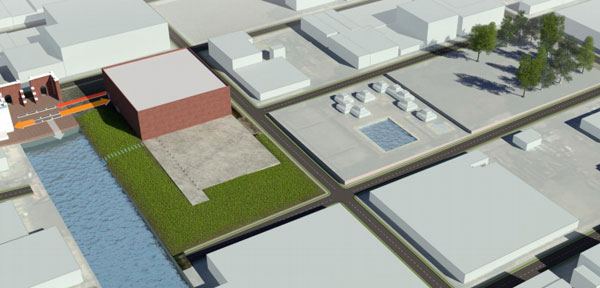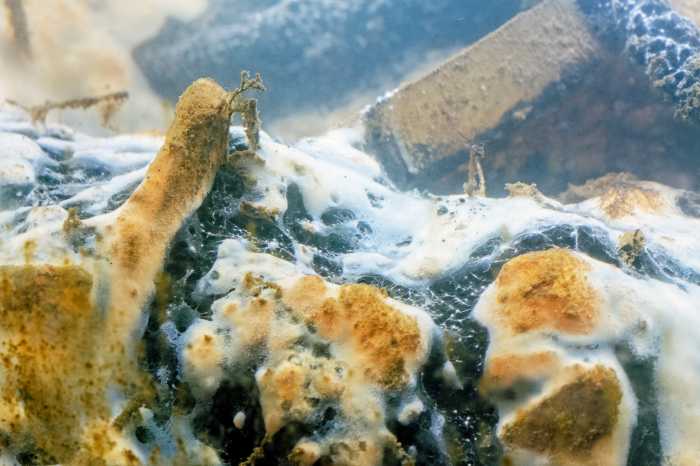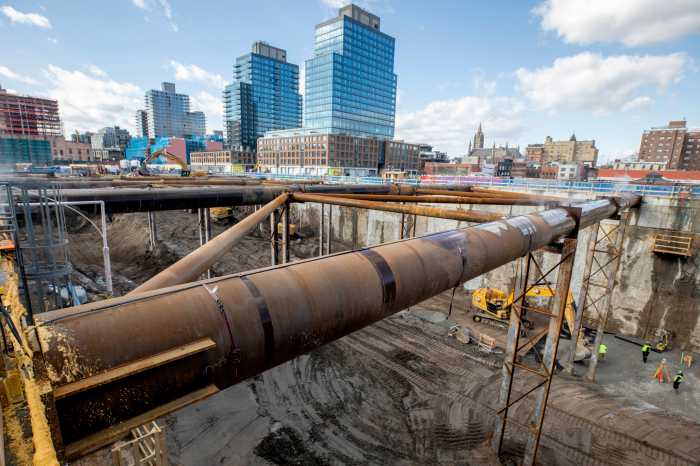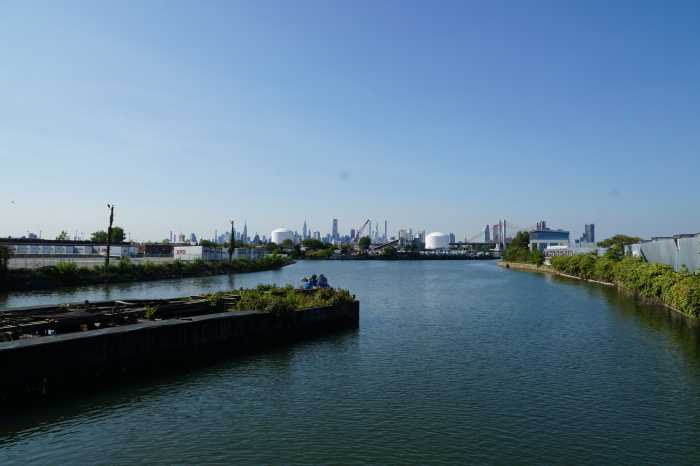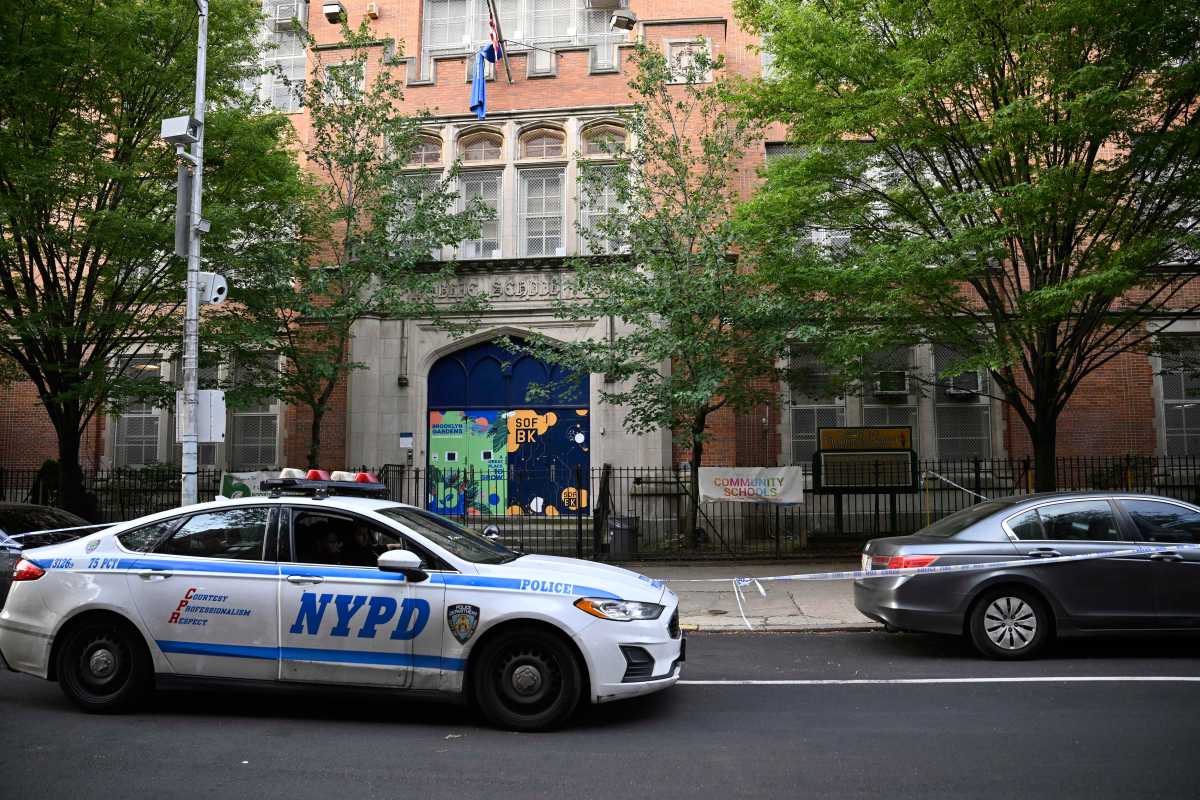The Double D is getting a double!
The Feds promised to build a temporary watering hole in Gowanus before draining and demolishing the nabe’s beloved Double D pool in order to remove toxic waste that a former gas plant left buried beneath the recreation area, leaders of the Gowanus Canal cleanup announced.
“We won’t allow that to happen until a replacement pool is built, and nothing will happen at the park until the temporary pool is up and operating,” Environmental Protection Agency honcho Walter Mugdan said at a Nov. 16 meeting about scrubbing the Superfund site.
But agency officials could not confirm where the new pool will go or when, exactly, it will be built.
Utility company National Grid, under supervision of the federal agency, must dig up the sludge below the public watering hole in Gowanus’s Thomas Greene Playground as one of the polluters required to fund the cleanup of the fetid waterway and its surrounding banks.
The utility provider — which owned the gas plant that formerly occupied the parkland — must also replace the Double D once the ground beneath it is purged of toxins, and Mugdan said the city could kick in some dough towards the restoration in order to build an even better facility than before.
“The obligation then is to provide the city with a replacement of the same kind as what was there,” he said. “It would be silly not to take that wonderful opportunity to improve the facilities that are there for the community.”
Environmental Protection Agency honchos wanted to use the site of the exhumed Double D as the permanent storage space for two several-million-gallon sewage tanks — which will hold raw waste and storm water so neither floods the canal when it rains — claiming the pool needed to be removed anyway in order to extract the muck underneath it and that filling the ditch with the tanks would kill two birds with one stone.
But locals slammed the proposal, charging that neighborhood youngsters would have nowhere else to take a dip during the summer months and demanding the federal agency park its sewage-packed cisterns elsewhere than the city park.
The Feds ultimately gave the city the authority to choose where the four and eight-million-gallon waste tanks should go, and the local lawmakers acquiesced to residents’ demands and proposed seizing private land on Nevins and Butler streets along the canal to house the underground vessels.
City officials claimed this solution, which Community Board 6 voted to approve last month, would only require the pool to close for as long as it takes to scrub the park clean, as opposed to shuttering for the entire duration of the Superfund cleanup, which they said could take as long as a decade, according to Mugdan.
“This part of the park has to be dug out anyway, but the city of New York had reasons — quite strong reasons — why it didn’t do that,” he said. “And quite a number of you in the community also said, ‘It’s one thing to lose our pool for two, three, maybe four years, but to lose it for eight to 10 years is no good.”
But if the city — which kicked-off its attempt to use eminent domain to seize the canal-adjacent land with a Nov. 27 public hearing as part of the Uniformed Land Use Review Process — can’t acquire the parcels by 2020, the Feds will move forward with installing the tanks in the Double D’s grave anyway.
And conducting a lengthy and expensive process to get the private properties — which could cost taxpayers as much as $70 million, Crain’s reported — for the sake of keeping the pool at its original site seems ludicrous, especially when the amenity is only used for a few months each year, according to a Gowanus resident who spoke at the hearing.
“We are told that we are supposed to buy into this other alternative site merely because of the environmental injustice of our neighbors, my neighbors, losing the use of the swimming pool,” said Marlene Donnelly, a member of Friends and Residents Of Greater Gowanus. “Let’s put our money in sewage infrastructure, not land acquisition.”
The beep will next weigh in on the land-seizure proposal, followed by the Department of City Planning and then Council before it lands on Mayor DeBlasio’s desk.



